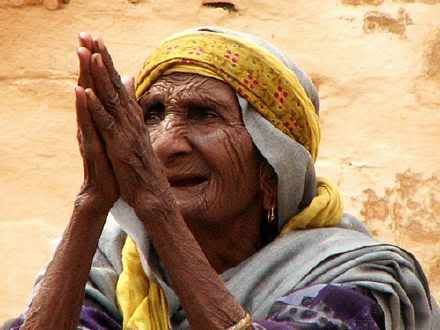Adil Najam
Our educated chattering classes do not consider it sophisticated to talk about milk.

(Photo Credit for this powerful picture: Baba Dody)
They would much rather spend their time pontificating about global geopolitics, the power politics of our would-be-saviors (both those in power and those waiting to come back to power), the intricacies of conspiracy theories about ‘hidden hands’ and not-so-hidden motives, and trying to read the ‘real’ story ‘between lines’ even as they ignore the stark realities of the lines themselves. Of course, for others there is always the option to belch out slogans reeking of pious religosity or self-righteous modernity.
 Ultimately, however, you need to think about the price of milk. Because milk is a necessity and slogans are merely a distraction.
Ultimately, however, you need to think about the price of milk. Because milk is a necessity and slogans are merely a distraction.
I know enough economics to know that while improvements in macro-economic trends matters, they matters much less when the cost of living and making ends meet for the citizenry at large run contrary. We at ATP have been and remain quite concerned about everyday inflationary trends. As we have stressed before, there is something very wrong when the denomination of the highest value banknote (Rs. 5000) is greater than what is considered a decent monthly wage for a middle-class Pakistani! We have also written about just how much it really costs ordinary Pakistanis to get petrol. Now, it turns out that the cost of milk – a daily necessity – is on the rise and moving in the same direction as the cost of petrol.
Many of us tend to think of Pakistan as a place where things are cheaper than in Europe, the US, the Middle East, or elsewhere. I don’t want to go into the math again (see here and here), but this graphic from The Daily Times (3 November, 2006), reminds us yet again that the real cost of living in Pakistan is not just higher than in most other places, for ordinary Pakistanis it is exorbitant.
The text in the graphic reports that most companies have raised the price of their one-litre packs of processed milk, and what used to sell for Rs. 30 is now selling at Rs. 38. Moreover, it reports that the price is likely to increase further.
All of this reminds me of a post Mansoor had recently written in Karachi Metroblog where he posed the question “What exactly can you do with a Million Ruppees?” The answer he came up with was, ‘Not too much!’
A lakh-patti (One Lakh=100,000) is not necessarily rich and depending of how many ‘lakhs’ one has, may even be poor!
The really sad part is that despite all this, most Pakistanis will never know what a Lakh Ruppees look like. And it is we, and not just the ‘authorities’ who are need to accept the blame. For those of you who like to get agitated about things, get agitated about this: The cruelty in society comes not only from the actions of those in power, but from the neglect, the silence, and the inaction of all of us. Indeed, from our willing participation in keeping things as they are.



















































May God Almighty, who is the Lord of all Creation AND the God of all things Big and Small, have pity on our fatted souls, and forgive us our sins, the counted and the uncounted.
MEA CULPA… MEA MAXIMA CULPA
This, from Dawn today, shows the recent increase in prices of necessary goods.
If everyone just prays for the “grandma” and does nothing else then I am afraid they will be putting Him in an embarrassing corner.
It breaks my heart looking at that pic of the old grandma :(
May Allah ease the pains of all those suffering
Sridhar,
Our dairy policy went through various policy shifts. In seventies the government sponsored pasteurizing plants while World Food Program provided skimmed milk which was pasteurized and supplied in bottles. But bottled milk could not attract the consumers.
In early eighties government eliminated import duties on UHT milk treatment plants. Most of the UHT plants could not run on capacity utilization as there was poor supply chain and weak distribution. With the passage of time they established collection centres. Since 1994-95 the UHT milk supply has increased from 78 million tonns to 360 (app) tons in 2003-04.
Of course the price of UHT treated milk is very high as compare to milk supplied by Gawala (milkman). But the government and the private sector is encouraging UHT treated milk to consumer because of food safety and investment issues.
Owais,
No doubt we are ‘khud kafeel’ in per capita milk, but distribution issue is not being tackled particularly with reference to supply of milk to urban poor. Almost 25% of the milk in urban household is consumed by the children.
Yes India and Pakistan have export potential for dairy products but there comes the farm subsidies issue by the rich countries like USA and EU. Their subsidized dairy products are undermining the world dairy prices. Therefore we are unable to compete in global dairy market.